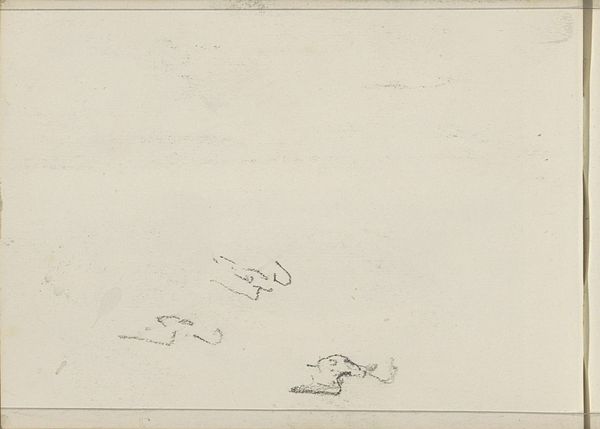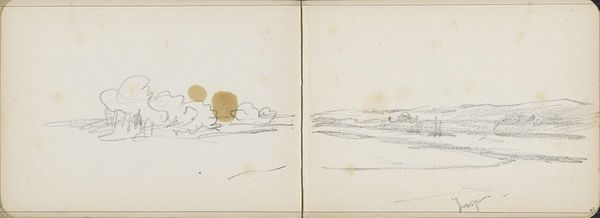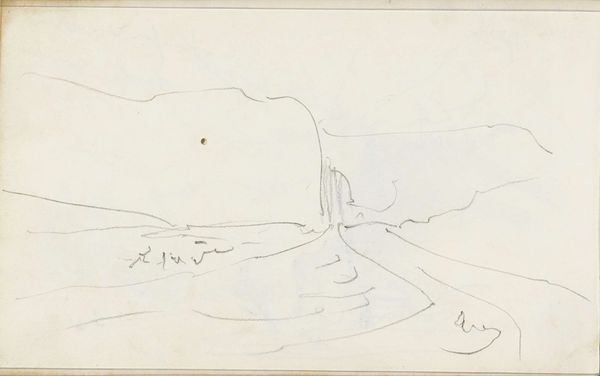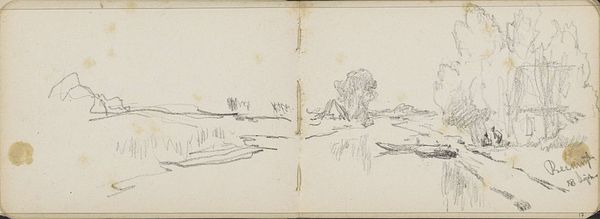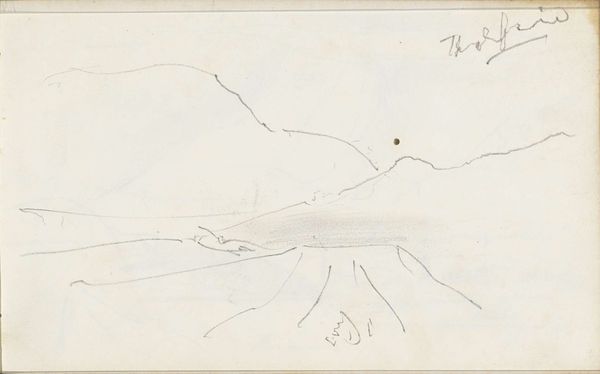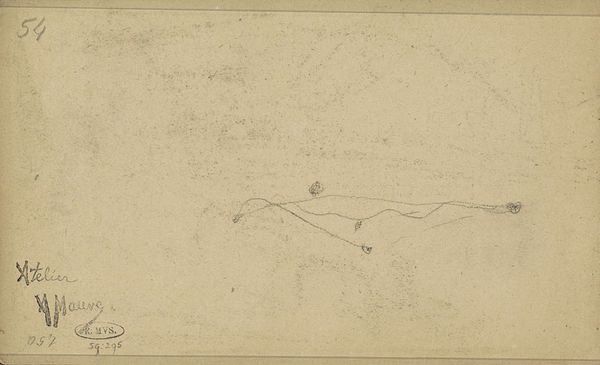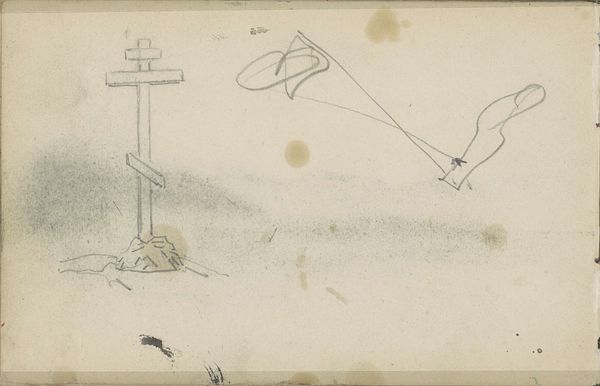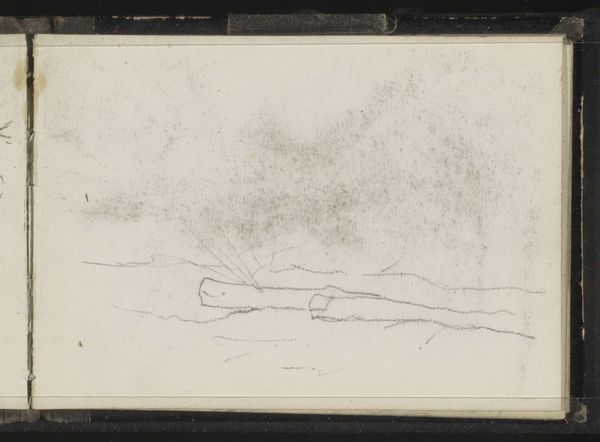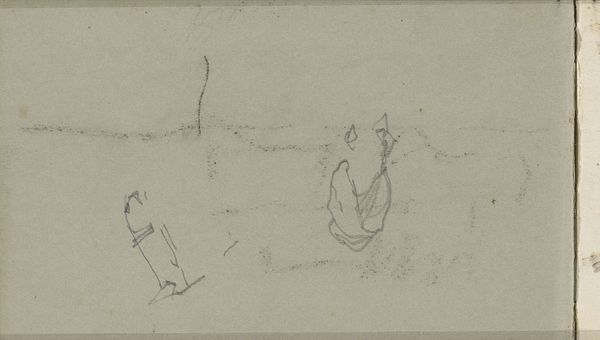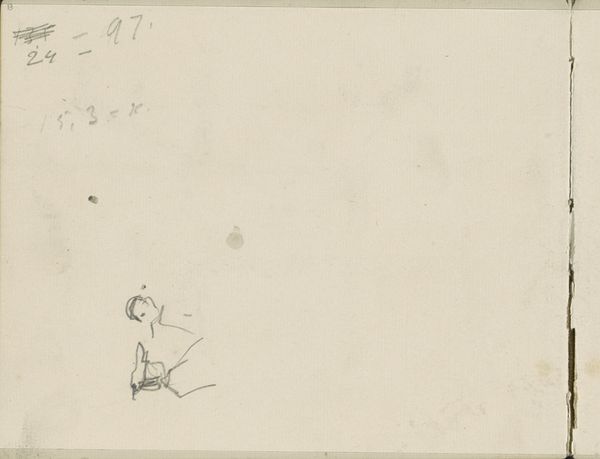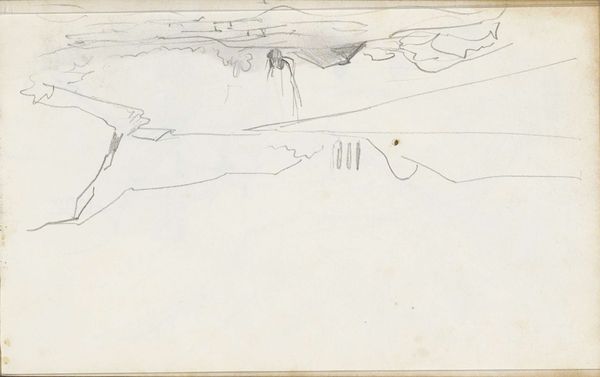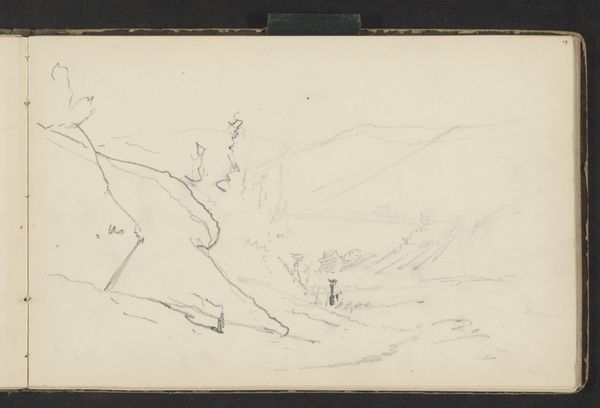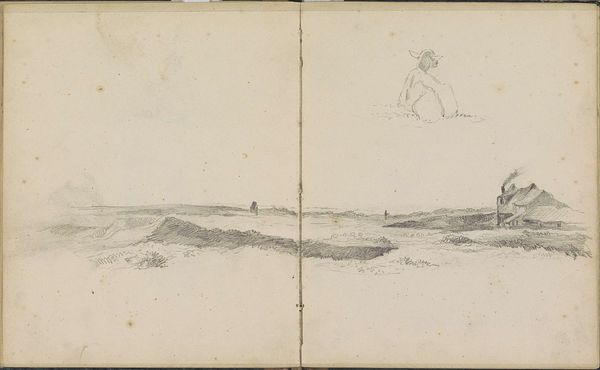
drawing, plein-air, pencil
#
drawing
#
impressionism
#
plein-air
#
landscape
#
pencil
#
genre-painting
#
realism
Copyright: Rijks Museum: Open Domain
Curator: Welcome. We're looking at Anton Mauve's drawing, "Schelpenvisser," sometime made between 1848 and 1888, held here at the Rijksmuseum. It depicts a lone figure, a shell fisherman, rendered simply in pencil. Editor: My initial reaction is one of sparseness. The limited use of lines almost gives the impression of a faded memory or a fleeting moment captured. Curator: Exactly. Let's consider the materiality. The work is just pencil on paper, indicative of plein-air studies. The rough texture is apparent; we are dealing with accessible materials, common tools, nothing precious here. This speaks to Mauve’s Realist leanings and also to the shift away from traditional academic painting at the time. Editor: The solitary fisherman. In many coastal cultures, the act of gathering shells represents a connection to the ancestors and to the rhythmic cycle of the sea. He almost seems to blend into the horizon, underscoring the insignificance of human endeavor against the backdrop of nature’s immensity. Those scattered drips and stains also punctuate this sense of natural ephemerality. Curator: Good eye! I believe the act of shellfishing itself should be explored. Was Mauve trying to make comment about labor or subsistence or was he focused solely on the rendering of light and atmosphere. Shellfishing as labor touches themes of the working class at that time. Editor: I suspect Mauve chose to capture the human form stripped of almost all detail to emphasize our shared symbolic ties to primordial, mythic imagery. The shell-gatherer could be seen as everyman—forever connected to the bounty and burden of the sea. Curator: A worthwhile addition to what started off as an impulsive drawing using the bare minimum of resources. Thank you for helping see past that simple exterior, Editor. Editor: A pleasure, Curator. Examining the echoes of past symbols in this humble study deepened my understanding of the drawing too.
Comments
No comments
Be the first to comment and join the conversation on the ultimate creative platform.
